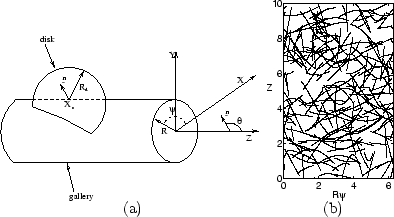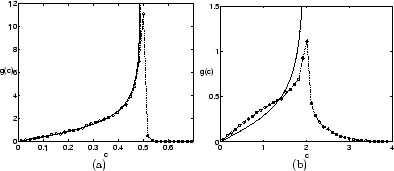
engineering & technology publications
ISSN 1759-3433
PROCEEDINGS OF THE FIFTH INTERNATIONAL CONFERENCE ON ENGINEERING COMPUTATIONAL TECHNOLOGY
Stereological Analysis of Fracture Networks along Cylindrical Galleries
Laboratory Sisyphe, University Pierre and Marie Curie, Paris, France
Fractures of some scale are present in all geological formations. Mapping and characterization of three-dimensional fracture networks is practically difficult. Stereological techniques have been used to derive three-dimensional descriptions from one and two-dimensional measurements, but the problems are usually ill-posed in the sense that the data cannot be inverted in a unique manner.
This study discusses stereological analysis of fracture networks observed in cylindrical galleries and the statistical characteristics of intersections between these galleries and fracture networks.
Fractures are assumed to be disks characterized by their radius Rd, orientation n, and
center location Xc. Disk centers and orientations are assumed to be uniformly distributed.
Fracture density ![]() is defined as the number of fractures per unit volume. This is illustrated in
Figure 1.
is defined as the number of fractures per unit volume. This is illustrated in
Figure 1.
The number of intersections between the network and the gallery was determined in an exact way. The full intersections where a full ellipse is obtained, are also calculated. Approximations to these quantities based on a simple geometric argument are derived. Exact and approximate expressions are shown to agree well with Monte Carlo calculations.
Trace lengths are also analysed. The general case is presented; of course, the resulting formulae cannot be analytically integrated. Two simple cases are successively addressed when the disk normal is parallel to the cylinder axis and when the disk radius is much smaller than the gallery radius. Results are illustrated in Figure 2.
Systematic Monte Carlo calculations are finally given for monodisperse disks, polydisperse disks distributed according to power law, lognormal and exponential probability densities.

|

|
purchase the full-text of this paper (price £20)
go to the previous paper
go to the next paper
return to the table of contents
return to the book description
purchase this book (price £105 +P&P)